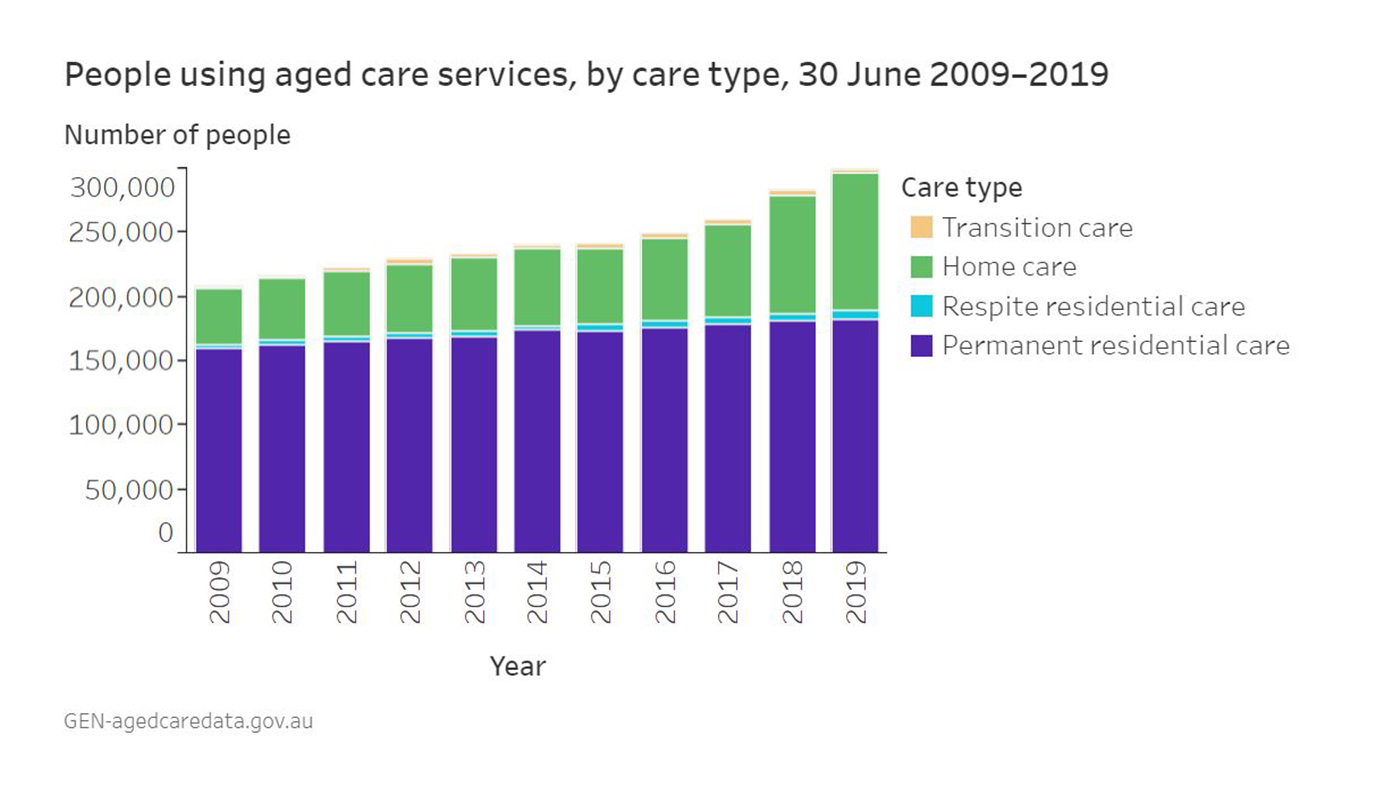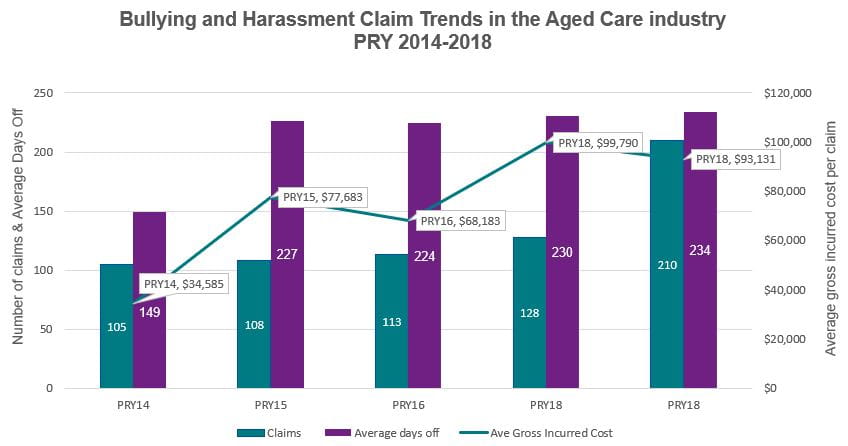Bullying and harassment claims rising in aged care
Aged care is broadly defined as the support provided to older people who need help in their own home or who can no longer live at home.

Aged care services include:
- care in a person's home
- residential care in aged care (nursing) homes and
- short-term care (such as after-hospital, transitional and respite care).
Aged care is a big industry in Australia. Government spending on aged care has increased each year since 2013-14 with more than $27 billion spent in 2018-19.
The industry is critically important to individuals, families and communities because it exists to care for people when they may be at their most vulnerable stage of life.
The Australian Institute of Health and Welfare advises the number of people receiving aged care support has also increased over the last decade; with most growth attributed to providing care in a person's home. With this increase—and the expected growth in demand due to an aging population—the health, safety and wellbeing implications for people receiving and providing care are significant.
Figure 1 - People using mainstream aged care, by care type, 30 June 2009-2019

What does the claims data show us?
Bullying and harassment in aged care workplaces is becoming a growing area of concern. icare's workers compensation policy renewal year (PRY) data over the past five years shows a significant increase in the number of bullying and harassment claims; from 123 in PRY 2014 to 236 in PRY 2018. The average cost per claim has also risen from $34,000 in PRY 2014 to $93,128 in PRY 2018.

Bullying and harassment in aged care
Workplace bullying is repeated and unreasonable behaviour directed towards a worker or a group of workers that creates a risk to health and safety. Unreasonable behaviour includes victimising, humiliating, intimidating or threatening. Workplace bullying and harassment can adversely affect the psychological and physical health of a person.
The nature of bullying in the industry can be complex. Bullying can occur between managers, staff and family members, and can originate from any of these parties. Also, aged care workers can bully—or be bullied by— residents and patients.
The Australian Nursing and Midwifery Federation's (ANMF) National Aged Care Survey (2019) provides insights into the culture of bullying that exists in some aged care settings. The survey findings outlined themes of major concern:
"Many participants felt that poor management in the sector is to blame for driving away good staff members and that a culture of bullying permeates the sector under the guise of performance management."
"Safety of staff, staffing inadequacies and safety of residents."
The Australian Government's Royal Commission into Aged Care Quality and Safety report provides further insights into existing leadership, culture and management practices. The report discusses opportunities for improvement to influence good workplace behaviours and improve safety for care providers and recipients.
Carers' health, safety and wellbeing
The needs of the aged care population are complex. Older people’s care needs are becoming more diverse, such as changing patterns in diseases and increased independent living arrangements. There is also a demand to cater to a broader range of preferences and wealth.
This complexity contributes to psychosocial risk factors, which are hazards including elements of the work environment, management practices, and/or organisational dimensions that increase the risk to health.
According to SafeWork Australia, different factors increase the risk of bullying, including:
- Work stressors, such as high job demands
- Leadership styles
- Systems of work
- Poor workplace relationships
- Workforce characteristics, such as vulnerable workers who may be more exposed to the risk of bullying.
Injury prevention
Bullying and harassment should not be tolerated by any worker in any industry, including aged care.
Targeted prevention strategies are needed to protect carers and others from harm. Steps employers and people leaders can take to reduce bullying and harassment in your workplace:
- Senior leadership commitment to understanding, identifying and implementing proactive strategies to mitigate and manage psychosocial risks; including designing safe systems of work and developing effective response procedures.
- A zero-tolerance policy for bullying and harassment that outlines the standard of expected behaviours at work and consequences for not complying.
- Education for all workers on the organisation's values, expected behaviours and zero tolerance of bullying and harassment.
- Leaders know and live the values, act as role models at work and know how to immediately and appropriately address poor behaviour.
- Effective channels for open communication and consultation that promote safe ways to raise bullying issues and complaints without fear of reprisal.
- Enough training to support leaders' skills and confidence to understand and address bullying and harassment.
Resources
icare
prevent@icare.nsw.gov.au
Contact the Injury Prevention team to understand more about your safety culture and injury prevention strategies.
SafeWork Australia
- Guide for preventing and responding to workplace bullying
- Dealing with workplace bullying, a worker's guide
- Preventing workplace sexual harassment guide
- Code of Practice—How to manage work health and safety risks.
SafeWork NSW Bullying Prevention Kit
SafeWork NSW Bullying Prevention Kit
The kit includes:
- A one-page questionnaire that can be completed anonymously
- Six workplace guide sheets—to help complete the tool and assess the responses
- Six workplace advice sheets—to show how bullying prevention can be improved.

